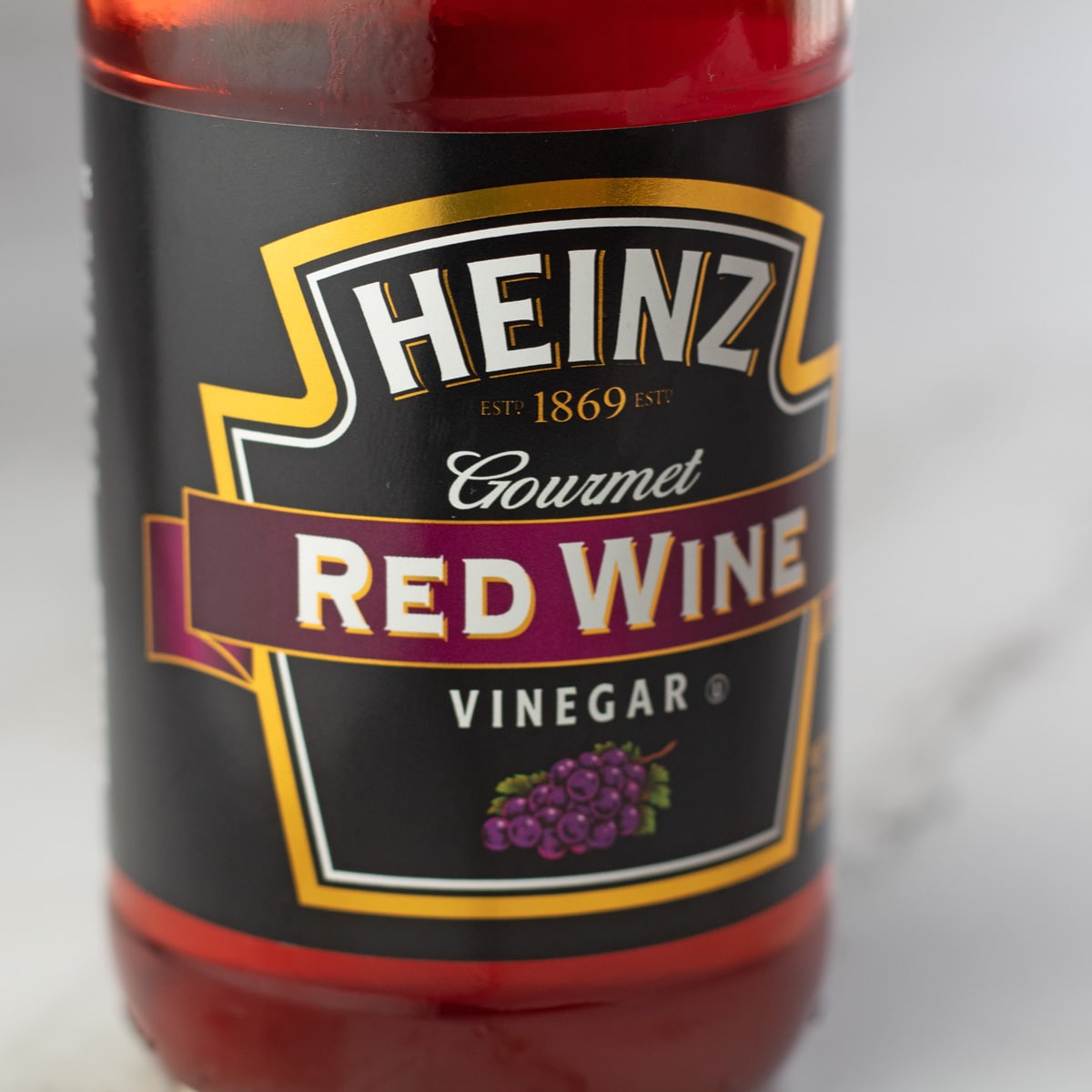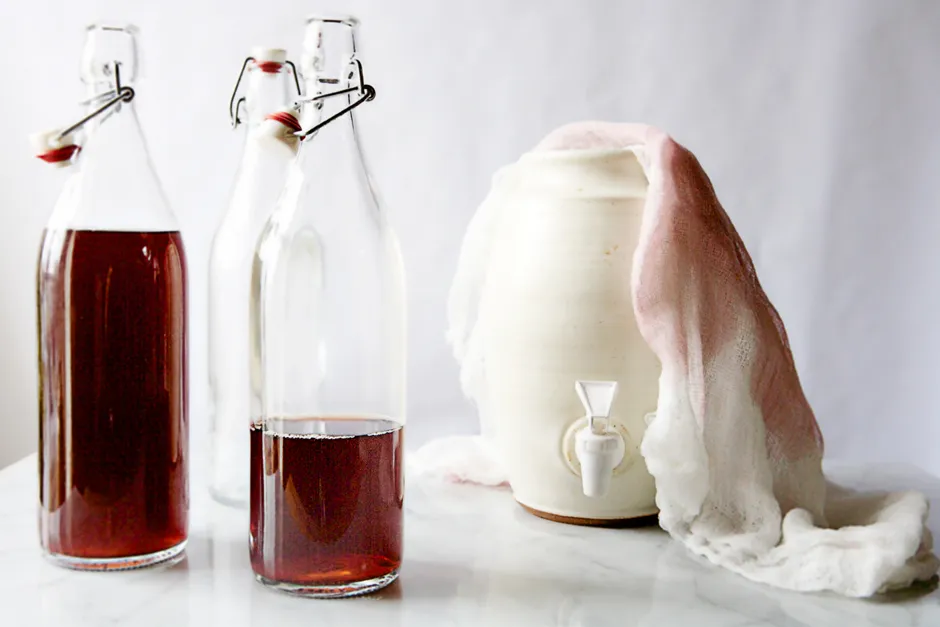Welcome to the intriguing world of culinary inquiries! Among the myriad wonders that grace our kitchens, the question of whether red wine vinegar retains alcohol holds a unique place. As a fundamental ingredient in various cuisines, red wine vinegar adds depth and tang to countless dishes. Yet, a lingering query remains: does this versatile condiment carry traces of its alcoholic origin?
Delve into the essence of fermentation, the transformation of wine to vinegar, and the intricate chemistry behind alcohol retention. In this exploration, we unravel the truth behind the potential alcohol content in red wine vinegar and its implications for both culinary arts and dietary considerations.
Table of Contents
ToggleThe Making of Red Wine Vinegar
The art of crafting red wine vinegar is a testament to the harmonious blend of science and culinary finesse. This transformative process begins with the fermentation of red wine, a journey that unveils the intricate dance of microbes and molecules. At its heart lies the conversion of alcohol into acetic acid, giving red wine vinegar its distinct flavor profile and culinary prowess.
Fermentation, a cornerstone of this alchemical process, initiates the metamorphosis of red wine into vinegar. The primary actor in this spectacle is the omnipresent yeast, which feasts upon the sugars present in the wine. As yeast metabolizes these sugars, alcohol is produced as a byproduct. This initial alcohol content forms the basis for the subsequent acetic acid production.
Alcohol’s role as a precursor to acetic acid is a pivotal stage in the transformation. Acetobacter, a group of bacteria, takes the spotlight here. These microbes work as nature’s artisans by facilitating the conversion of alcohol into acetic acid, which they love when there is oxygen present.
The two-step oxidation process used in this catalytic feat consists of first turning alcohol into acetaldehyde and then further oxidizing acetaldehyde to produce acetic acid. This acetic acid is what gives vinegar its distinctive tangy, pungent aroma.
Crucially, it’s the involvement of bacteria that marks the turning point in this process. As alcohol-digesting Acetobacter diligently works its magic, the alcohol content in the fermenting red wine gradually decreases while the acetic acid content rises. In essence, the journey from red wine to red wine vinegar showcases the intricate synergy of biology and chemistry.
The Alcohol Content in Red Wine Vinegar

The alcohol content in red wine vinegar is a matter of intrigue, raising questions about its presence post-fermentation and its comparison to the alcoholic beverage from which it originates. Following the fermentation process, red wine vinegar typically retains only a trace amount of residual alcohol. By diligently transforming alcohol to acetic acid, the Acetobacter bacteria significantly lower the alcohol content in red wine vinegar, making it non-intoxicating.
In comparison to its base beverage, red wine, red wine vinegar has a significantly lower alcohol concentration. Red wine vinegar normally has a residual alcohol percentage of less than 0.5%, keeping it well below non-alcoholic guidelines, while red wines often have alcohol levels between 12% and 15%. When examining commercial and homemade red wine vinegar, differences in alcohol levels emerge.
Commercially-produced varieties undergo stringent processes to ensure minimal residual alcohol content, adhering to regulatory standards that define non-alcoholic products. Homemade versions, however, might retain slightly higher alcohol levels due to variations in fermentation conditions and bacterial activity. This distinction highlights the controlled environment and meticulous measures undertaken by manufacturers to achieve the desired low-alcohol or alcohol-free status in commercially-produced red wine vinegar.
Essentially, red wine vinegar’s alcohol concentration is a monument to the transformational force of fermenting and the delicate balance between its intoxicating roots and savory utility. Understanding these subtleties enhances our appreciation for the complex world of flavors and their scientific foundations.
Alcoholic Evaporation
The evolution of alcohol content in red wine vinegar is a dynamic process influenced by time, exposure to heat, and culinary applications. Initially, following the fermentation process, red wine vinegar contains only a minimal residual alcohol content. Over time, however, this alcohol content tends to diminish further as oxidation and natural evaporation occur. As the vinegar is stored or used in recipes, its alcohol content gradually decreases, rendering it virtually devoid of intoxicating elements.
The possibility of alcohol evaporation arises when vinegar made from red wine is used in cooking or heated. Due to its lower point of boiling than other components of vinegar, heat can accelerate the evaporation of alcohol. Consequently, when used in simmered or sautéed dishes, a significant portion of alcohol can evaporate, leaving behind the flavorsome essence of the vinegar without the alcohol’s intoxicating effects.
In terms of consumption, dishes prepared with red wine vinegar are highly unlikely to induce noticeable alcoholic effects. Given the minimal residual alcohol content to begin with, combined with the further reduction through cooking, the alcohol levels in dishes are negligible.
Health and Culinary Implications
The consumption of red wine vinegar carries intriguing health considerations, especially for individuals who abstain from alcohol. Unlike its precursor, red wine, red wine vinegar contains minimal residual alcohol content due to the transformation process. For those avoiding alcohol, this aspect makes red wine vinegar a viable option, as the alcohol content is reduced to insignificant levels—typically less than 0.5%.
The negligible alcohol content in red wine vinegar holds significance in diverse diets. It aligns with religious, health, or personal choices that discourage the intake of alcoholic beverages. Furthermore, the slight alcohol remnants present in the vinegar are typically diluted or evaporated during cooking, rendering it safe for consumption across a range of culinary applications. This adaptability makes red wine vinegar a valuable ingredient.
Beyond its health implications, red wine vinegar contributes distinct flavors and culinary advantages. The tangy, slightly acidic notes it imparts elevate dishes by balancing and enhancing taste profiles. Its ability to complement and contrast various ingredients underscores its role as an essential tool in a cook’s arsenal.
Conclusion
In the captivating exploration of whether red wine vinegar contains alcohol, we uncover a harmonious convergence of science and culinary artistry. Through the transformative process of fermentation and the diligent work of Acetobacter bacteria, the alcohol content in red wine vinegar becomes negligible, often less than 0.5%.
This makes it a safe and delectable option for individuals who avoid alcohol. As a culinary gem, red wine vinegar enriches dishes with its tangy notes, enhancing flavors while adhering to diverse dietary choices. Thus, this investigation not only demystifies the alcohol content but also reveals the multifaceted nature of a condiment that tantalizes both palates and minds.

I am a passionate beer connoisseur with a deep appreciation for the art and science of brewing. With years of experience tasting and evaluating various beers, I love to share my opinions and insights with others and I am always eager to engage in lively discussions about my favorite beverage.
















